#narrownose
Explore tagged Tumblr posts
Text
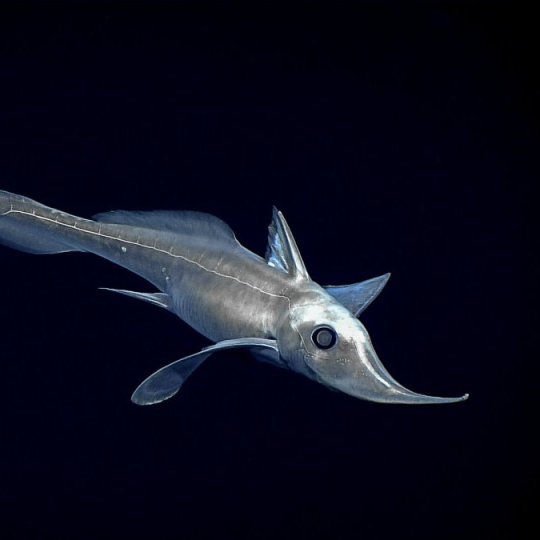
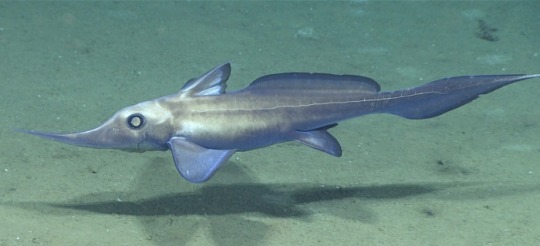
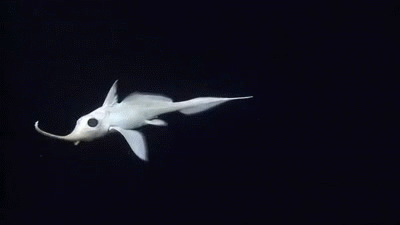
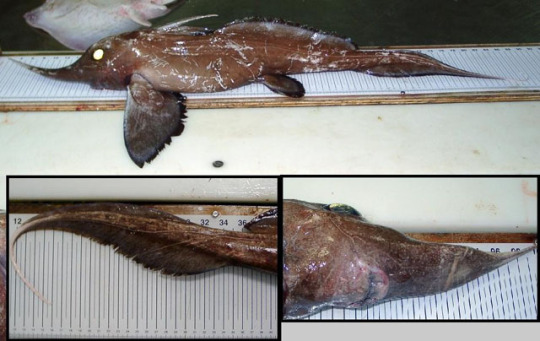
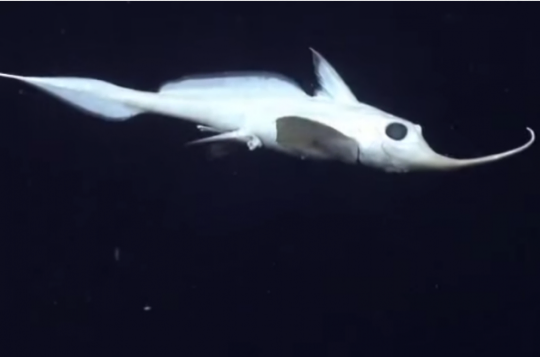
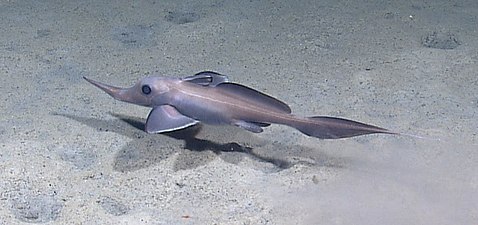
The narrownose chimaera (Harriotta raleighana) also know as the ghost shark or the spook fish is a longnose chimaera of the family Rhinochimaeridae which is native throughout temperate oceans worldwide and is typically found at depths of between 650ft (200m) and 10,200 (3,100m). Longnose chimaeras are members of the class Chondrichthyes, diverging from their closest relatives (sharks, rays, and skates) during the devonian period approximately 400 million years ago. Not much is known about there deep sea life style but they appear to feed upon crustaceans, worms, small fish, mollusks, and enchinoderms. They are themselves preyed upon by large sharks, boney fish, and large predatory squids & octopus. Female narrownose chimera are typically larger reaching around 4.9ft (1.5m) compared to males which reach around 3.3 (1m) in length. Both sexes sport elongate rostra, slender filamentous tails, large pectoral and pelvic fins, big eyes, and two dorsal fins, the first being preceded by a mildly poisonous spine. They can range in color from pale marbeled brown to dusty grey to ghostly white or a mixture of those colors. Like many other Chondrichthyes, longnose chimaeras reproduce by laying eggs. Egg cases consist of a central chamber surrounded by a web-like structure. Female longnose chimaeras lay a pair of eggs several times per year.
#pleistocene#pleistocene pride#pliestocene pride#pliestocene#fish#extant#narrownose chimera#chimera#shark week#shark#longnose#narrownose#Harriotta raleighana#spookfish#ghostfish#ghost shark#ghost#spook#ratfish#rat#deep sea
325 notes
·
View notes
Text


kanaena fish 🐟 to match the mizumafu fish from earlier
#my art#sighs#project sekai#prsk#kanade yoisaki#ena shinonome#a little less name jokey with these ones. kana is a narrownose chimaera (purely based on vibes) and ena a painted comber (because...paint..)
75 notes
·
View notes
Text


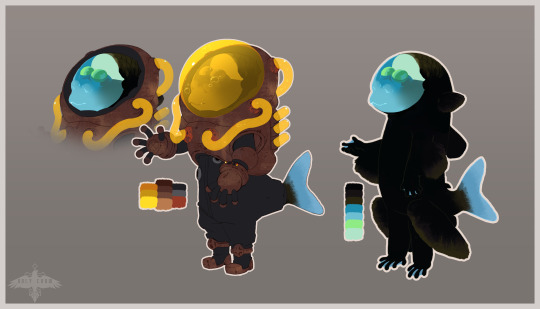

some new star fox ocs that im going to use to explore sci-fi horror
#art#drawing#character design#ghost shark#barreleye fish#narrownose chimaera#chimaera fish#sea angel#sea creatures#deep sea fish#star fox#starfox#star fox oc#starfox oc#artists on tumblr#robot#scifiart
328 notes
·
View notes
Note
i don’t actually know anything about shin megamo tensei vengeance so i don’t know the context behind the protagonist being a fish jokes but something about the his eyes and hair reminds me of a narrownose chimaera. (you should absolutely look up narrownose chimaera shark so you can see its cute face and elegant winglike fins, it is a wonderful fish)
There is no context behind the fish joke. You should play SMT V: Vengeance anyways but know that it won’t make the fish references any clearer


This creature is incredible though .. very beautiful very powerful
24 notes
·
View notes
Text

Deadly Aquarium SAL: Exhibit #7
A narrownose ghost shark and a vampire squid.
17 notes
·
View notes
Text
Heavy Metal Bioaccumulation by Cestode Parasites of Mustelus Schmitti (Chondrichthyes: Carcharhiniformes), from the Bahía Blanca Estuary, Argentina

Abstract
The environment of the Bahía Blanca estuary is considered a hot spot in terms of pollution. Bioindicators should have the ability to react relatively fast to certain pollutants and environmental disturbances. Therefore, an exploratory study was carried out determining and quantifying the concentrations of cadmium (Cd), chromium (Cr), copper (Cu), lead (Pb) and zinc (Zn) in the muscle and liver of Mustelus schmitti narrownose smooth-hound and were compared with the values obtained from their respective helminth assemblies. In most of the fishes analyzed, the concentration of heavy metals was higher in the infra communities of cestodes compared to the host. Our results position the cestodes as efficient sentinel species of pollution by bioaccumulating higher concentrations of heavy metals than the host tissues, thus behaving in excellent early warnings of environmental pollution, more real than quantifications in sediments, in water and fish
Keywords: Heavy metals; Bioaccumulation; Sentinels parasites
Introduction
The estuary of Bahía Blanca (39° 03′44 ″ S 62° 04′00 ″ W) is an adequate environment to develop pollution studies, considering that it is an area that includes urban centers, several industrial parks and deep-water ports. All the effluents are discharged with different degrees of pretreatment, so they generate different impacts on the ecosystem. In environmental monitoring to detect heavy metals, organisms are often used as bioindicators, which have the ability to react relatively fast to certain toxic products and environmental disturbances. Some of these organisms, such as parasites, may be highly sensitive to brief exposures, poorly detected in water, sediment or fish [1-5]. Our previous studies in the estuary have focused on evaluating the parasitism of fish in the time scale to be able to compare and analyze them as effect indicators altering some parasites population parameter such as prevalence and abundance or causing symptoms in their hosts in response to environmental disturbances [6-10]. The narrownose smooth-hound Mustelus schmitti Springer, 1939 is a resident fish of the estuary of Bahía Blanca and third in importance as a fishing resource. Based on the fact that some parasites, such as cestodes, have the ability to absorb and accumulate more chemicals than their host tissues [11].
The objective of the present study was to analyze whether a higher concentration of metals in the parasites respect to their host was applicable in the cestodes- narrownose smooth-hound model and to evaluate if these helminths possess ecotoxicological value and could be used in the study area as early bioindicators of anthropic impact. Therefore, an exploratory study was carried out in order to determine and quantify the cadmium (Cd), chromium (Cr), copper (Cu), lead (Pb) and zinc (Zn) concentrations in the muscle and liver of the narrownose smooth-hound and compared with the values obtained from their respective cestode assemblages (Dollfusiella sp., Orygmatobothrium schmittii, Calliobothrium australis and Symcallio sp.) The samples were analyzed by Inductive Coupling Plasma Atomic Emission Spectrometer (ICP-AES, LANAQUI-CERZOS-CONICET-UNS). The values were compared with the limit values allowed by the European Union for fish meat.
Results and Discussion
In most of the fishes analyzed, the concentration of heavy metals was higher in the infra communities of cestodes compared to each host. The parasites concentrated 270 times more Cadmium than the fish muscle. For this metal, the standards established in the liver and those of the parasites were exceeding the limits established by the European Union for muscle or liver. Chromium was bioconcentrated in the cestodes two times more than the muscle and six times more than the liver. Copper was accumulated with values 65 times more than muscle and up to four times more than in the liver. Lead had values 48 times more in helminths than both muscle and liver of fishes. For this metal in most dosages, the concentration measured in parasites exceeded the limit value established by the European Union. Zinc bioaccumulated in parasites seven times more than muscle and four times more than liver. Only in one case the Zinc concentration was three times higher in the liver than in parasites.
The environment of the Bahía Blanca estuary is considered a hot spot in terms of pollution and is included among the most eutrophic coastal ecosystems known [12]. Also, since many years it have been reported high concentrations of heavy metals and pesticides in water and sediments [13,14]. The combined effect of these pollutants, plus the sewage discharge, the industrial effluents of petrochemical origins, and the overheated water from a thermoelectric power station (620MW) all of them represent a growing threat to the environment. These increase in anthropogenic activity around estuaries, coupled with the persistence of heavy metals, their high toxicity, strong tendency to bioaccumulate, and non-degradability [15], usually affect water. As negative effects it could change the trofic web in the aquatic fauna, eliminate the spawning and larval recruitment sites and a potential decrease in diversity, affecting all the ecosystem [16,17]. That is why the need to choose of efficient bioindicators in the evaluation of the quality of the environment [18].
Conclusion
The estuary of Bahía Blanca is one of the most important in Argentina, having the main deep-water port system in the country. Although fish species can be used as efficient and useful bioindicators, our results position cestodes parasites as sentinel species of contamination for the fact that reported higher concentrations of heavy metals than their hosts. This would avoid possible underestimations in pollution levels by being quantified only in sediments, in water and in fish.
To Know More About Journal of Dairy & Veterinary sciences
Please click on: https://juniperpublishers.com/jdvs/index.php
For more Open Access Journals in Juniper Publishers
please click on: https://juniperpublishers.com/index.php
#veterinary microbiology#veterinary obstetrics#veterinary pathology#veterinary pharmacology#Juniper Publishers#open access journals
0 notes
Photo
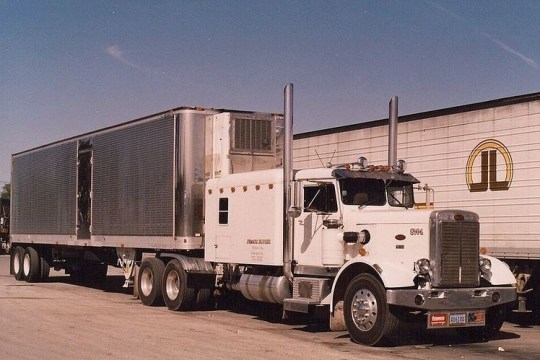
Narrow Nose Peterbilt #narrownosepeterbilt #narrownosepete #narrownose #peterbilt #sweetpete #cdlhunter https://www.instagram.com/p/CqGdOINpmaa/?igshid=NGJjMDIxMWI=
26 notes
·
View notes
Text
The Creature Awaits #148:
Each week I plan to feature an amazing creature, admiring God's fantastic artistry. Hopefully it’ll brighten someone’s day to see something new and interesting if they haven’t seen it before. : )

(Adorable photograph courtesy of NOAA Ocean Exploration (CC BY-SA 2.0))
The Narrownose Chimaera
Scientific Name: Hariotta raleighana
Region: Deep sea waters throughout the Atlantic and in parts of the Pacific
Size: Males reach an average length of about 24.7" (~62.8cm), and females reach an average length of about 29.8" (~75.8cm)
Interesting Notes: This adorable deep sea fish uses the nerve endings in its long snout to find food. The spine on its dorsal fin contains a mild venom used for self-defense. (It kind of reminds me of Zero, the dog from The Nightmare before Christmas. : ) )
#creatureawaits#Narrownose Chimaera#Hariotta raleighana#adorable deep sea fish#zero#nightmare before Christmas#cute fish#surprisingly cute animals
8 notes
·
View notes
Photo

Is it a fish or sth else @marinebiologyshitposts ?
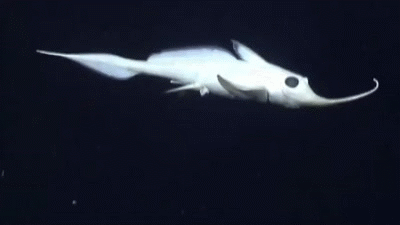
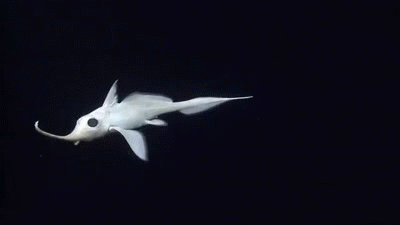
The Narrownose chimaera (Harriotta raleighana), occurs in deep waters of the continental slopes in depths of 380 to 2,600 m in both the Atlantic and Pacific Oceans. They are oviparous but nothing is known of spawning and reproduction and very few juveniles have been collected. It was filmed swimming 10 m above the seafloor in Hydrographer Canyon, off the coast of Nantucket Island in the US.
video / NOAA Okeanos Explorer Program
73K notes
·
View notes
Photo
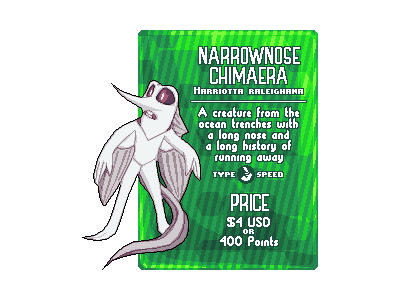
SPECIES: Narrownose Chimaera (Harriotta raleighana) PRICE: $4 USD / 400 DA Points EXTRAS: N/A
#013#Narrownose chimaera#chimaera#deep sea fish#deep sea creatures#violet#red#grey#white#water#speed#good#neutral#male
1 note
·
View note
Link
According to the IUCN Red List, the following ten species of sharks are evaluated as Critically Endangered:
Pondicherry shark, Carcharhinus hemiodon Ganges shark, Glyphis gangeticus New Guinea River Shark, Glyphis garricki Irawaddy River Shark, Glyphis siamensis Natal Shyshark, Haploblepharus kistnasamyi Daggernose Shark, Isogomphodon oxyrhynchus Striped Smoothhound, Mustelus fasciatus Sawback Angelshark, Squatina aculeata Smoothback Angelshark, Squatina oculata+ Angelshark, Squatina squatina
And the following twenty species of sharks are evaluated as Endangered:
Borneo Shark, Carcharhinus borneensis Smoothtooth Blacktip Shark, Carcharhinus leiodon Harrisson’s Dogfish, Centrophorus harrissoni Winghead Shark, Eusphyra blochii Speartooth Shark, Glyphis glyphis Whitefin Topeshark, Hemitriakis leucoperiptera Honeycomb Izak, Holohalaelurus favus Whitespotted Izak, Holohalaelurus punctatus Broadfin Shark, Lamniopsis temminickii Narrownose Smoothhound, Mustelus schmitti Whale Shark, Rhincodon typus Scalloped Hammerhead Shark, Sphyrna lewini Great Hammerhead Shark, Sphyrna mokarran Argentine Angelshark, Squatina argentina Taiwan Angelshark, Squatina formoa Hidden Angelshark, Squatina guggenheim Smoothback Angelshark, Squatina occulta+ Angular Angelshark, Squatina punctata Zebra Shark, Stegosoma fasciatum Sharpfin Houndshark, Triakis acutipinna
This post does a great job summarizing what this means, why this is and how we can use the power of information to educate on protecting species!
#endangered#endangered species#Critically Endangered#iucn red list#marine biology#marine conservation#shark#sharks#shark conservation#conservation#ocean conservation
40 notes
·
View notes
Photo
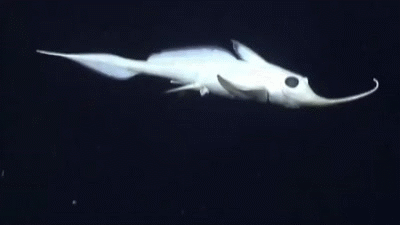
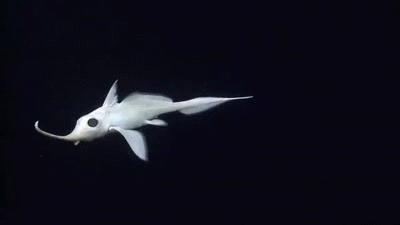
The Narrownose chimaera (Harriotta raleighana)
source: NOAA Okeanos Explorer Program
14 notes
·
View notes
Text
Why Protecting a Shark Nursery in the Patagonia Sea Is Crucial
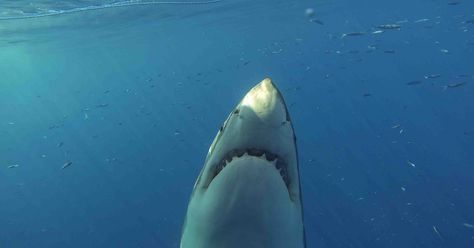
Juan Martín Cuevas is a marine conservationist with the Argentina program at WCS (Wildlife Conservation Society). Since late 2015, he has been working to develop and implement a conservation plan for sharks and rays in the Patagonian Sea. Cuevas contributed this article to Live Science's Expert Voices: Op-Ed & Insights. In the waters found off the southern part of the Buenos Aires province in Northern Patagonia may be one of the most popular shark-fishing spots in Argentina and possibly in all of South America. Called Bahía San Blas, this spot is a baby-delivery room of sorts, serving as a major nursery for several shark species, including the tope shark (Galeorhinus galeus), or cazón. And while this 888-square-mile (2,300 square kilometers) stretch of sea is considered a marine-protected area, its remoteness leads to weak law enforcement and a significant loss of sharks to recreational fishing. This lack of true protection is particularly harmful to the topes — the focus of my conservation work. Topes are medium in size and easy to handle, with a long, pointed and transparent snout. During the spring and summer, fishers gather these sharks by the thousands. Even so, few know that the species is endangered. Due to their low reproduction rate — females give birth to about 20 pups every three years — it is illegal to kill tope sharks in Buenos Aires province waters. They have also been classified as Critically Endangered in the Southwest Atlantic since 2006 as Brazil and Uruguay saw an extreme population decline and the Argentine trawler fleet reduced its catch per unit effort (CPUE) by 80 percent after a peak of 610,000 individuals landed in 1984 for all commercial fleets.
Tope conservation
My goal has been to engage fishing guides in a tagging program called Conservar Tiburones en Argentina(Conserving Sharks in Argentina) that involves most of the coast of thePatagonian Sea — a body of water teeming with threatened and endangered sharks, rays, skates and chimaeras (also called ghost sharks, even though they aren't actual "sharks"). For this project, 12 coastal shark fishing sites distributed between Faro Querandí and Puerto San Julián in southern Patagonia (representing fewer than 1,243 miles, or 2,000 km, of coastline), have been designed to encourage fishermen and the local community to protect coastal sharks. This includes the tope sharks; the critically endangered gray nurse shark (Carcharias taurus), or escalandrún; the copper shark (Carcharhinus brachyurus), or bacota; the broadnose sevengill shark (Notorynchus cepedianus), or gatopardo; spiny dogfishes (Squalus acanthias); and hammerhead sharks (Sphyrna zygaena). During the project, I helped to recruit 83 anglers, 25 fishing guides and participants in three shark tournaments to shift from catch-and-retain practices to catch, tag, and release (I am happy to report that many of of these folks remain involved in this work). The program began as an initiative of the Conservation Leadership Programme (CLP), created by a partnership between Birdlife International, Fauna & Flora International, and WCS to obtain data on threatened species. Since 2013, the project has tagged more than 450 sharks in the targeted coastal shark fishing sites.
Patagonia conservation
Shark conservation in the Patagonian Sea includes everything from preparing management plans to estimating population sizes of target species. In 2016, I initiated just such a population study. We captured tope sharks in the San Blas protected areausing longline gear with barbless circular hooks baited with Brazilian menhaden, a forage fish. We measured each shark's length, determined their sex and attached dart tags to their dorsal fins. Three monitoring stations were established to repeat the tagging procedure during the springtime of the next three years to complete a tope count inside the marine-protected area. I am also engaged in projects to identify priority habitats, increase shark awareness in local communities, and to engage key stakeholders as stewards in the design and implementation of a Tope Conservation Program.
Commercial fisheries
While we have been working with recreational fishermen, commercial fisheries are also essential to this conservation. According to the United Nations Food and Agriculture Organization (FAO), Argentina's catches of cartilaginous, or chondrichthyan, fishes (as opposed to bony fishes) are among the highest in the world. While the sharks, rays and skates that make up the majority of this fish class are not traditional targets, many species are hauled in incidentally in nets as bycatch or harmed unnecessarily during industrial and small-scale fishing activities. There are 30 species of sharks and skates in the Patagonian Sea that are rated as "Threatened" on the Red List kept by the International Union for Conservation of Nature (IUCN). For instance, the regional school shark (Galeorhinus galeus) is Critically Endangered and the Argentine fishery for this commercially targeted species has collapsed. Other seriously threatened cartilaginous fish off Patagonia include vulnerable angel sharks (Squatina occulta,S. guggenheim, andS. argentina) and endangered narrownose smoothhounds (Mustelus schmitti). Despite strong evidence of shark species declines, management actions have been slow to implement. In 2013, the Federal Fisheries Council passed a resolution to reduce the mortality of chondrichthyans, making the practice of finning (the removal of shark fins for use in a popular Asian soup delicacy) illegal, requiring fishers to report incidental catches, and placing observers onboard boats to report any significant levels of incidental catches. While such measures were necessary and overdue, they have not eliminated overfishing, nor have they ensured the future of these species. In Argentina and the Patagonian Sea, comprehensive research and sustained engagement and advocacy remain essential to improve the conservation of sharks, rays and their chondrichthyan cousins before we lose them for good. Source : https://www.livescience.com/60432-protecting-shark-nursery-patagonia-sea.html Read the full article
0 notes
Photo
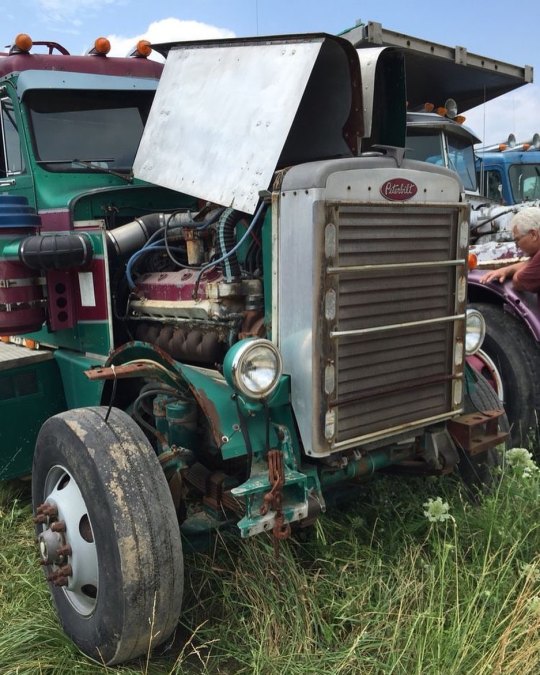
Narrow nose Pete #narrownosepete #narrownose #peterbilt #butterflyhood #cdl #cdlhunter #truckstuff https://www.instagram.com/p/CqNM34xOcrr/?igshid=NGJjMDIxMWI=
24 notes
·
View notes
Photo

Reposted from our friends at @gemstatetrucks 💪💪💪 Kenworth Narrow Nose #vintagetruck #vintagetrucks #retrotrucks #retrotruck #70strucks #70struck #80strucks #80struck #truckin #bigrig #freightliner #macktrucks #americantruck #americanmade #truckstop #18wheeler #tractortrailer #narrownose #dieseltrucks #truckdrivers #truckstop #whitetrucks #kenworth #americantrucker #kw #americana #truckculture #americanculture #workingclass #cdlhunter @cdlhunter (at Springdale, Arkansas) https://www.instagram.com/p/B6Quw-lJV8g/?igshid=yewr7xo9c94a
#vintagetruck#vintagetrucks#retrotrucks#retrotruck#70strucks#70struck#80strucks#80struck#truckin#bigrig#freightliner#macktrucks#americantruck#americanmade#truckstop#18wheeler#tractortrailer#narrownose#dieseltrucks#truckdrivers#whitetrucks#kenworth#americantrucker#kw#americana#truckculture#americanculture#workingclass#cdlhunter
0 notes
Photo

Reposted from our friends at @gemstatetrucks 💪💪💪 Kenworth Narrow Nose #vintagetruck #vintagetrucks #retrotrucks #retrotruck #70strucks #70struck #80strucks #80struck #truckin #bigrig #freightliner #macktrucks #americantruck #americanmade #truckstop #18wheeler #tractortrailer #narrownose #dieseltrucks #truckdrivers #truckstop #whitetrucks #kenworth #americantrucker #kw #americana #truckculture #americanculture #workingclass #cdlhunter @cdlhunter — view on Instagram https://ift.tt/35EJRqq
4 notes
·
View notes